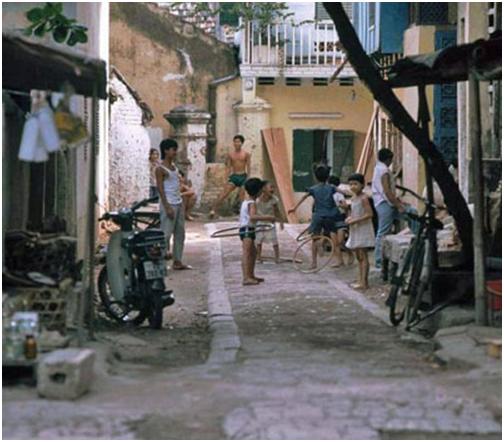Coffee & Life
Saigon… the alley
If Hanoi is famous for its streets and small alleys, then when it comes to Saigon, the word “hẻm” (alley) carries a very special meaning—very Saigon. These are long, winding alleys with many turns, like a maze hidden within the bustling city of Saigon.

The word “hẻm” (alley) has become a common phrase among locals when asking for directions or wanting to buy something. A distinctive feature of Saigon’s alleys is the small street food stalls that reign over these already narrow pathways. Yet, no one seems bothered; instead, they enjoy these little eateries. Early in the morning, the alleys come alive with calls like “Go to the alley entrance to buy a bowl of bún for mom,” “Alley coffee, guys!” or “I’m at alley A, B, C… come here!”
Perhaps because of this, the small stalls in Saigon’s alleys have created a unique charm for the city, standing out amid the hustle and bustle of a city filled with tall, luxurious restaurants along the main roads. When people mention Saigon, it’s hard to forget the very distinct “alley culture” here.
If you get lost in a Saigon alley and don’t know the way, you should ask the locals for directions because these alleys can connect one district to another. One alley can lead to countless other alleys, twisting and turning in confusing ways. Sometimes, traveling along the main roads from District 1 to District 10 takes a long time, but weaving through the alleys can cut the trip down to just 15 minutes. You might even discover new spaces and lively apartment complexes as you pass through these alleys.
There are many types of alleys in Saigon. Some alleys are actually wide roads with official street names. Others are tiny paths just wide enough for a motorbike. I remember the writer Sơn Nam once said, “This guy’s house is in such a tiny alley! When he dies, they can’t even carry his coffin out!” when visiting Mr. Nát in Cầu Bông.
Houses in Saigon’s alleys are tightly packed, often sharing walls, so neighbors open their doors and immediately see each other. At noon, the alleys fall completely silent. Just hearing a street vendor’s call at the alley’s entrance means those at the far end can also hear it clearly because the alley acts like a perfect sound tube, carrying voices deep into the neighborhood.

When you come to Saigon and stroll along the streets, if you spot in the distance a bánh mì cart, a sugarcane juice vendor, or a small shop selling hủ tiếu or bún riêu, that’s usually a sign that there are alleys nearby. These little street stalls serve almost like markers of an alley’s presence, found almost everywhere at the entrance of each alley on Saigon’s streets. These small vendors never stand isolated in the middle of the road; they always occupy their proper places—right at the mouth of an alley, or at the end of one and the beginning of another.
The alleys in Saigon are unique—only found in Saigon. They are unlike the streets with official names in Hanoi, nor are they like the “ngõ” (small lanes) in Hội An or Huế.
These alleys in Saigon may gradually disappear due to urbanization, but their image will forever remain in the hearts of Saigon people. The winding, tangled alleys are like the veins or the honest, straightforward nature of the people of Saigon. Within them flows a neighborhood affection that runs deep in the blood of every Vietnamese—a kind of neighborly love that you can’t find anywhere else in the world. There, people lean on each other, sharing life together with both the good and the bad in a genuine and complete way…
Collected.







